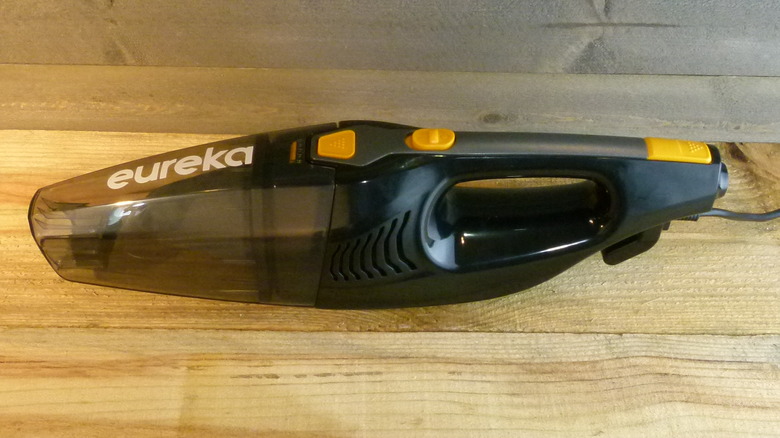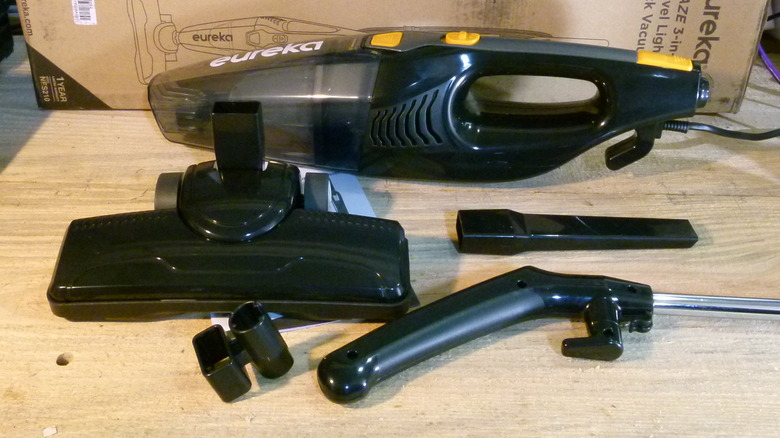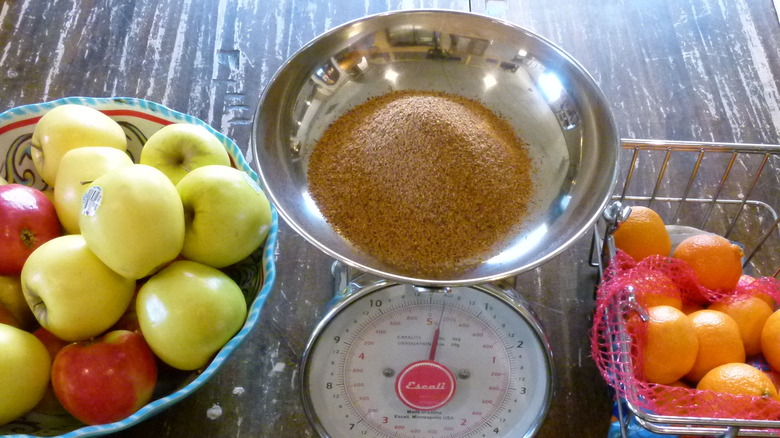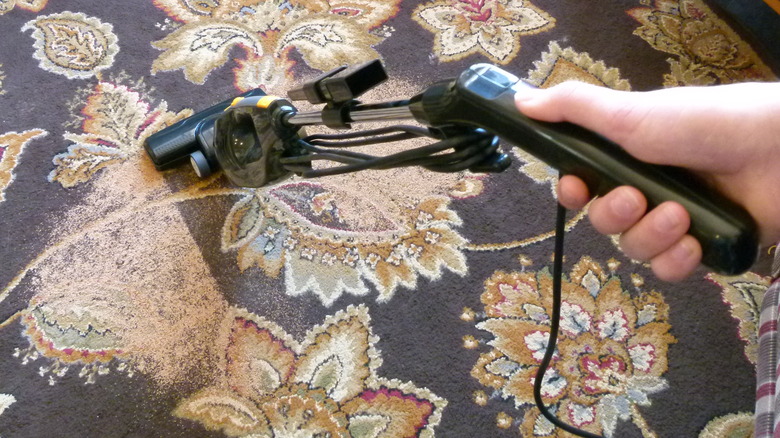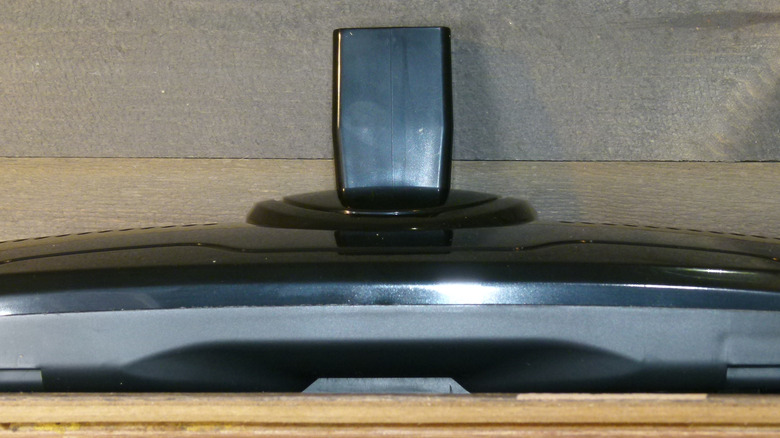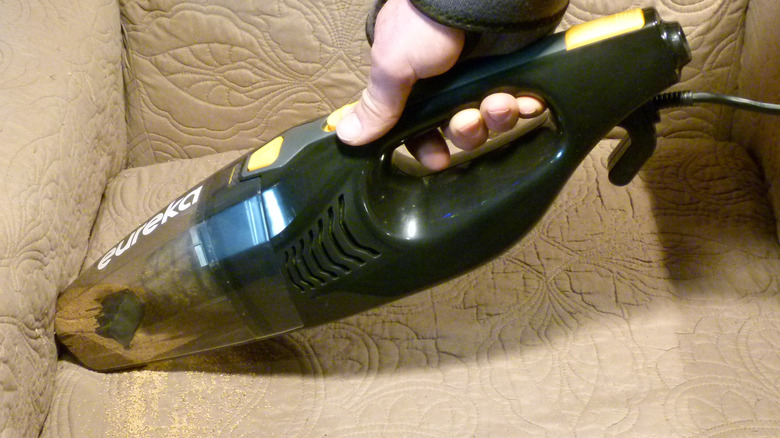We Tried The Cheapest Stick Vacuum At Wayfair. Here's How It Went
We may receive a commission on purchases made from links.
At $37.53, the Bagless Stick Vacuum by Eureka seemed like the simplest thing in the world: a hand-held vacuum with a stick affixed to one end and a floor nozzle to the other. There's a lot of territory between this, Wayfair's cheapest, and the $999 LG Cordzero in terms of both price and features. At the median stick vac price, around $130, you see a lot of more modern-looking devices, most of which look like leaf blowers with elaborate light-show projectors on their ends. Their suction and storage devices are practically a part of their handles. The Eureka, on the other hand, is a more traditional design. Picture a hand-held vacuum (seriously, picture it) tapering toward an angled nozzle. Someone has jammed a thin aluminum tube in one end, and what looks like the business end of the world's cheapest upright vacuum cleaner on the other.
The old-school design imparted a bit of comfort, as did the Eureka name, which is more familiar and less ridiculous than more recent brands like the vaguely threatening, sci-fi AstroAI, or the B-movie Shark Rocket. (We suspect the reason there hasn't been a Sharknado vacuum yet has more to do with lawyers than self-restraint.)
The Blaze arrived in a couple of days in a box that, based on size, shape, and weight, looked like what one might expect from a baguette delivery service.
About the Eureka Blaze Bagless Stick Swivel Vacuum
When we set out to try the cheapest stick vacuum at Wayfair, it wasn't completely clear what such items are for. Once we found the Eureka Blaze, it became even less clear: a stick vac convertible to hand-held, but with a cord. The Eureka website was little help, proclaiming the inclusion of a "crevis tool" without any explanation of why crawfish need vacuuming. (It turns out that "crevis" is not a Scrabble word, but to be fair it's spelled "crevice" elsewhere on the page.)
The Blaze sports a 2-amp motor; a typical upright vacuum has at least 8 amps and usually tops out at 12. Its entire control array consists of an on-off switch, if you don't count the latch releases used to remove the handle and the filter housing. Its floor nozzle doesn't include a rotating brush
The Blaze received 3.9 stars from eight Wayfair reviewers ... hardly enough to draw any conclusions, but roughly in line with the 4.1 stars it got from over 50,000 Amazon reviewers. The complaints are fairly consistent: too little suction to clean well. Some note that the handheld portion or the floor nozzle (or both) is difficult to detach. For their part, Eureka touts more features than you'd guess such a simple device has, starting with its light weight (3.2 or 3.97 pounds, depending on where you look), maneuverability, and suitability for many surfaces. And the filter is washable, and the floor nozzle is wide.
Getting testy with the vacuum
If stick vacuums were suddenly gifted with a nickname by English speakers, it would almost certainly be "Cheerio vac." Google reports 883,000 web pages containing the three words "Cheerio," "vacuum," and "review." If you've had a toddler and constantly stepped on dropped (or thrown) Cheerios, you know they're second only to Lego in annoyance factor. (This matters because stick vacuums aren't designed for deep-cleaning carpets — they're designed for the quick cleanup of simple spills.) Somewhere along the way, buyers and reviewers alike decided Cheerios were the things to test vacuums with, so we did. We also measured out four ounces of ground walnut shell used as a fine abrasive medium for "sandblasting" and dumped that on a rug. We hoovered that up with the Blaze, then dumped it out again on an engineered hardwood floor, and hoovered that. Then we measured the amount in the filter housing.
We tested the suction with a static pressure meter, then compared it with a handful of other devices, including shop vacs and upright models. Static pressure (known by other terms like "water lift" and "sealed suction") is a measure of how much power a vacuum has to lift soil from the floor, and how easily it can deal with increased resistance from, say, a filter that needs to be cleaned.
And, of course, we cleaned some floors, sucking up whatever we could and pushing the rest around the room to a new position.
Cleanup on the Cheerios and walnut aisle
In general, the Blaze was a pleasure to use. This particular model is sometimes marketed as the Swivel Vacuum, and we can see why. Some mixture of magic and engineering allows it to be very easily steered around obstacles.
The machine also seems to clean well. Of the 4 ounces of fine walnut shell we vacuumed twice, the machine recovered almost all of it. It did this in relatively few passes; we pushed the floor nozzle through the "spill" and back again three times, then one additional time perpendicular to the first three. Some YouTube reviews seem to find it acceptable to attempt to vacuum a single strip of floor for three minutes; we did not find the need.
It also sucked up Cheerios pretty well, though it did have a tendency to push them along like a bulldozer when they were larger than the floor nozzle's aperture ... an opening into which larger objects are admitted. We measured this aperture at about 2.7 x 33 mm. Of course, the floor nozzle doesn't rest on the floor, so it's already lifted 2.3 mm off the floor by small wheels, making the effective aperture size 5 x 33 mm. This aperture also represents the fundamental tradeoff common to all vacuum cleaners in general, and to stick vacs in particular.
Doing the job when the numbers say you can't
Any distance between a vacuum and the floor reduces its suction power. So a smaller aperture would be better, except that people have Cheerios to suck up. If you wanted to consistently suck up popcorn, on the other hand, you'd require an even larger aperture, and therefore you'd apply even less suction. This can be a serious hindrance in a low-powered device like the 2-amp Blaze ... which it turns out doesn't deliver much suction to begin with.
We tested the static pressure of six vacuums. A Ridgid shop vacuum did the best at 5 inHg, while the second worst was a tie between a huge Shop-Vac model and an ancient Sears-Craftsman Model 113 at 2.5 inHg. You might have guessed already that the Eureka Blaze did the worst, and it did so with a mere .74 inHg, equivalent to only 10 inches of water lift. This was tested, of course, with the meter sealed to the opening in the handheld portion of the vacuum. Attaching the floor nozzle and creating that break surely reduced the static pressure to almost nothing.
Yet the Blaze still managed to suck up everything we threw at it. How could that be? One possible explanation is that the walnut shells are relatively lightweight and therefore take less pressure to lift. Another possibility is that we had just poured the medium on the rug, so it hadn't gotten down into the pile.
Should you buy the Eureka Blaze?
This leads us to one final bit of praise for the Blaze. The first thing you might think when assembling it is that the cord is going to be too heavy. Surely winding up all 18 feet will make the vacuum topple over. This is supported by the fact that Eureka appears to Photoshop out the cord in almost all photos of the Blaze. Are they concerned about having messy photos, or about alerting potential buyers to the potential effects of a heavy cord on such a light device? In any event, the Blaze handled it with no problem. Locked into an upright position, it didn't really waver at all with the weight of the wound or unwound cord.
So what do you do with such a conflict? If you occasionally have to clean up dry spills that weigh less than, say, sand, and if you can find the Eureka Blaze for $40 or less, buy it. On the walnut shell test, a canister or upright vacuum would probably have done better ... or perhaps just quicker, since it's hard to imagine any device getting up every bit of a spill. If a Blaze is handy, we'd choose it over pulling out a heavier and more complicated vacuum nine times out of 10. If it were cordless, that would be even better ... but you will likely pay three times as much for a cordless vacuum than a corded model with similar power.
